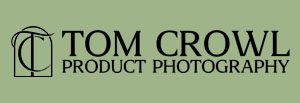What are product photography ethics? And why are they important?
As technology takes over, the line between real and artificial has become increasingly blurred.
Who hasn’t seen a selfie on social media transformed into a “flawless” masterpieces?
These same filters and apps have invaded the realm of product and commercial photography.
But how much digital enhancement is too much?
Where does the line between presenting a product in its best light end and misleading the consumer begin?
Let’s dive into a look behind the ethics of product photography.

The Power of the Image
An image can speak a thousand words.
Especially in the world of e-commerce, where potential customers can’t physically touch or try a product before buying.
Online, the product image becomes the primary sales pitch.
It’s crucial that these images not only catch the eye but also provide an honest representation of the product.
The FTC and Honest Representation
The Federal Trade Commission (FTC) has set guidelines to ensure that consumers aren’t misled by advertising imagery.
As per the FTC’s regulations, the product being sold must be authentically represented in the image.
For instance, if an advertisement is selling cornflakes, those flakes in the image must be real.
But, interestingly, the milk could be white glue, as the milk isn’t what’s being sold.
On the surface, this might seem deceptive. Why use glue when selling breakfast cereal?
It all boils down to aesthetics and practicality. Real milk might cause the cereal to become soggy during a prolonged shoot.
While these techniques can enhance the appeal of a photograph, they raise questions about the fine line between enhancement and deception.



Trust Between Brand and Consumer
One of the major risks of over-editing or misrepresenting a product through photography is the potential erosion of trust between the brand and the consumer.
If a customer feels deceived by an image once they receive the actual product, it’s unlikely they’ll make a repeat purchase or recommend the brand to others.
Brands should consider the long-term implications of short-term gains achieved through misleading imagery.
AI-Generated Images: A New Ethical Frontier
With advancements in technology, we’re seeing a rise in AI-generated images in product listings.
These are not photos taken of the actual product but are generated based on data and digital renderings.
While these can be incredibly realistic, they present a new set of ethical dilemmas.
If the AI-rendered image doesn’t perfectly match the real product, consumers might feel misled.
It’s a burgeoning area of concern that will likely see more regulations in the future.

Editing, Retouching, or Alteration: What’s Acceptable?
There’s a clear difference between basic editing, retouching, and outright alteration.
Editing might involve adjusting the lighting, contrast, or color balance to make a photograph look its best.
Retouching could mean removing a dust particle from a product or smoothing out a wrinkle in a clothing item.
However, alteration goes a step further, changing the shape, size, or fundamental appearance of a product.
The latter is where ethical concerns are most prominent.
Striking the Right Balance
It’s essential for brands and photographers to strike the right balance between presenting a product in its best possible light while ensuring honesty and transparency.
Here’s a balanced approach to consider:
Be Transparent:
If certain aspects of an image are staged or not genuine (like the glue-as-milk example), consider providing a note or disclaimer.
Stick to Enhancements, Not Overhauls:
Adjusting lighting or removing a stray thread is one thing; changing the color of a product or its size is another. Know where to draw the line.
Engage with Your Audience:
Use platforms like social media to engage with your audience. There are social media content photographers who can help you create compelling images. Ask your audience for feedback on product images. Their insights might surprise you and help guide your photography strategy.

Final Words About Product Photography Ethics …
In the world of product, advertising and commercial photography, where the image is paramount, it’s tempting to go overboard with digital enhancements.
However, brands must remember the value of trust and transparency.
By striking a balance between aesthetics and authenticity, brands can present their products in the best light without compromising on ethics.
Looking for an ethical product photographer? Use the form below to start the conversation.
Discover How Professional Photography Can Elevate Your Brand
Get a Custom Quote Tailored to Your Specific Needs

Take a minute to fill out the form below. Doing so will help me understand your product photography needs. Once I receive your information, I'll reach out to you personally to discuss the project in more detail and create a customized quote for you.
You may also text me at: 410-596-4127 or E-mail me at: tom@tomcrowl.com

